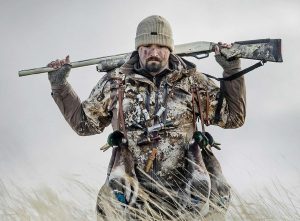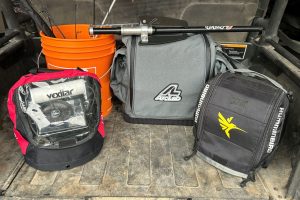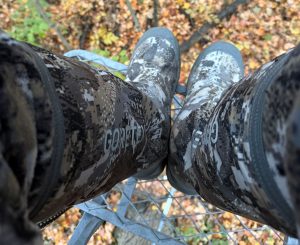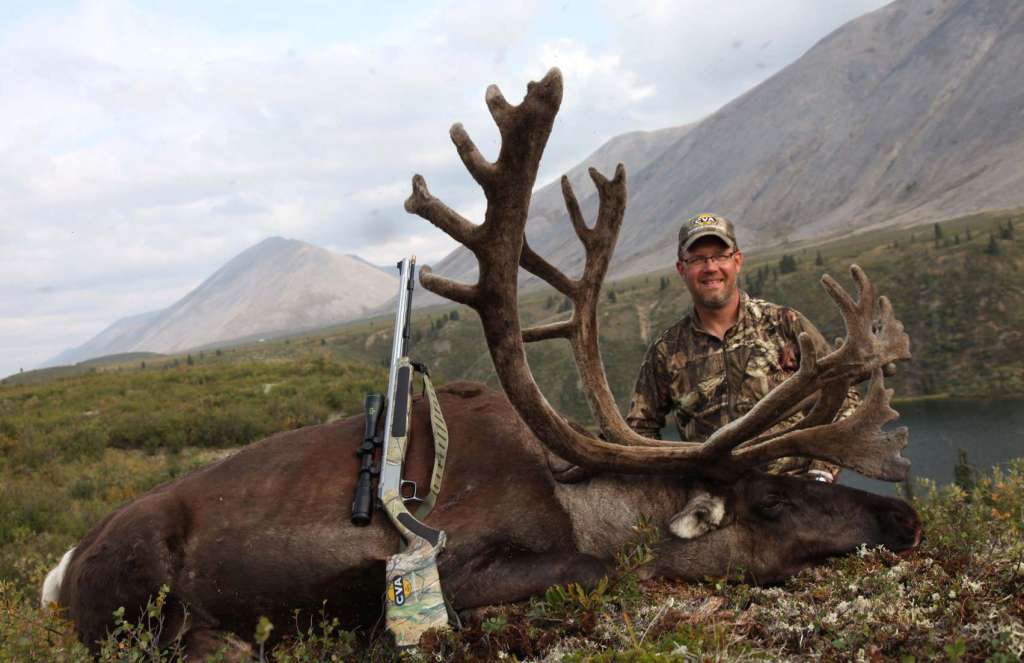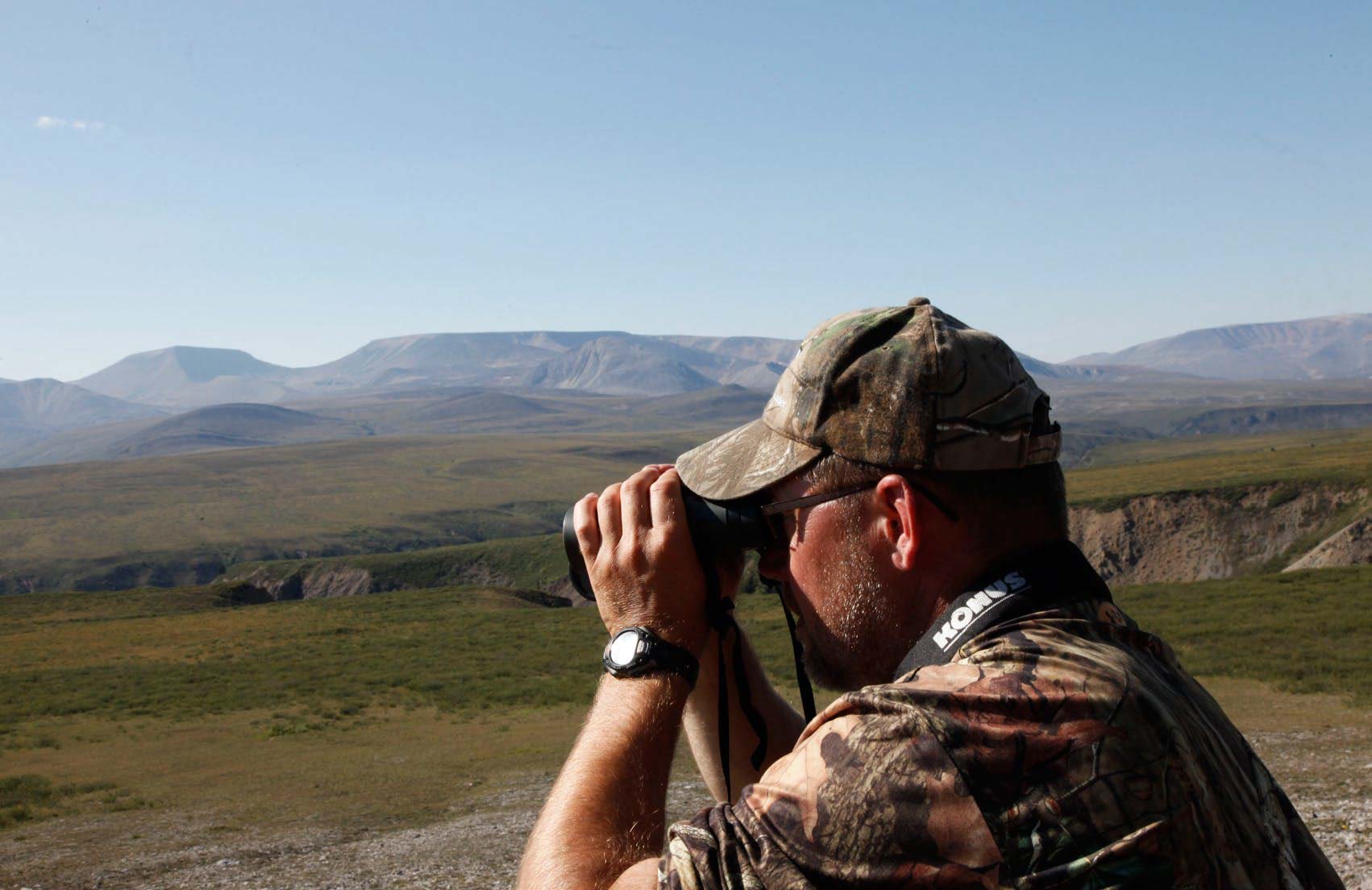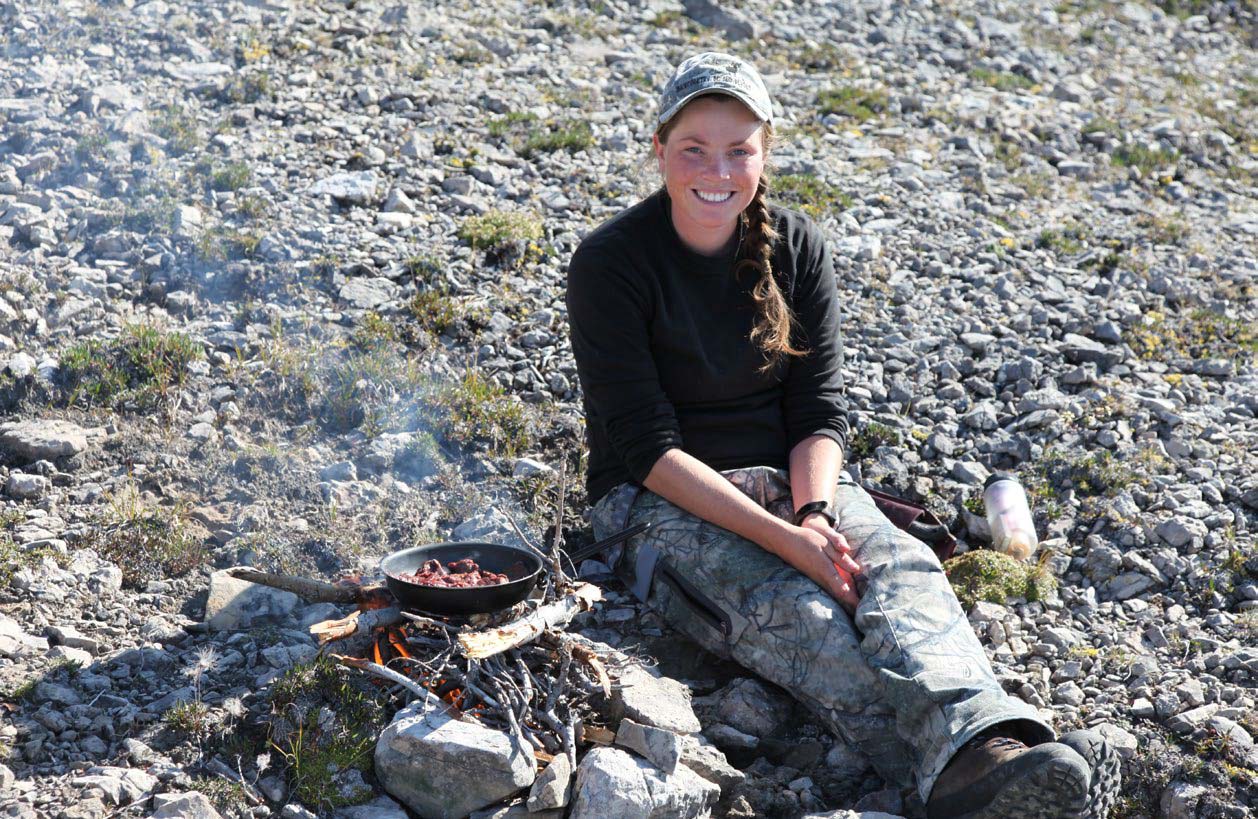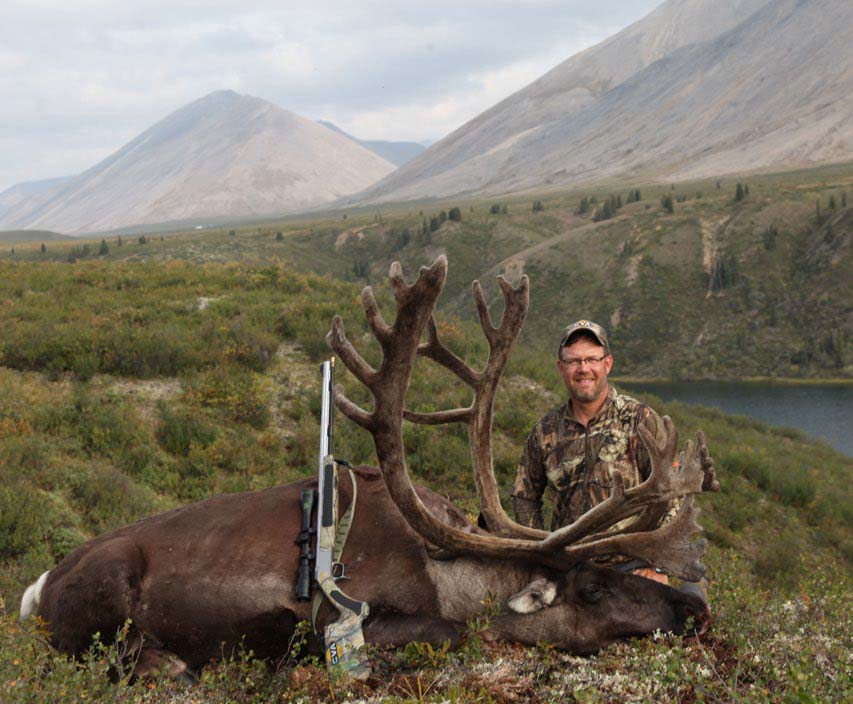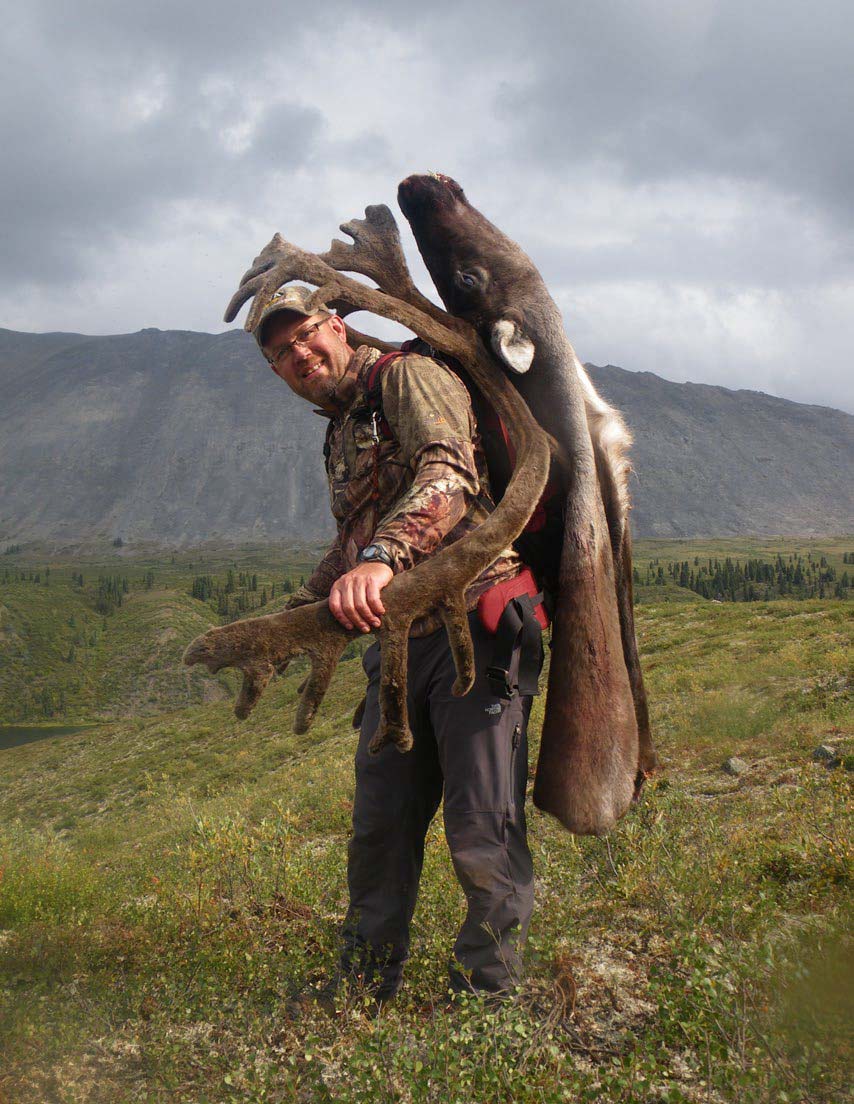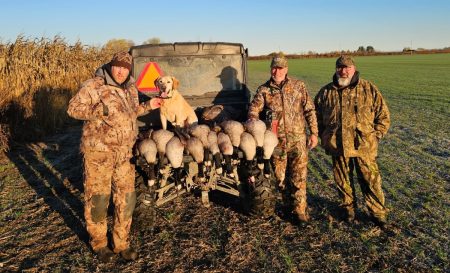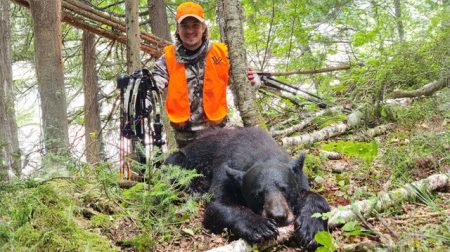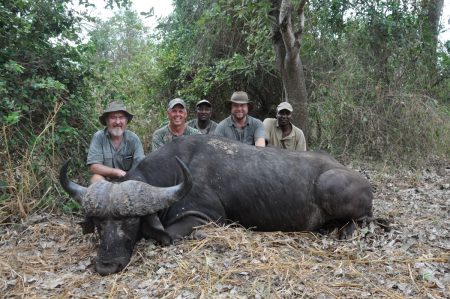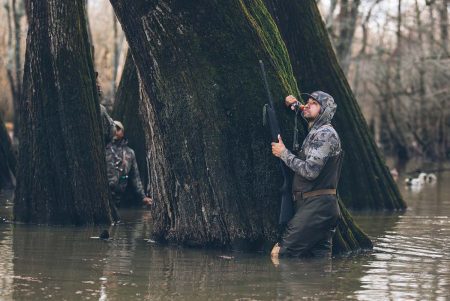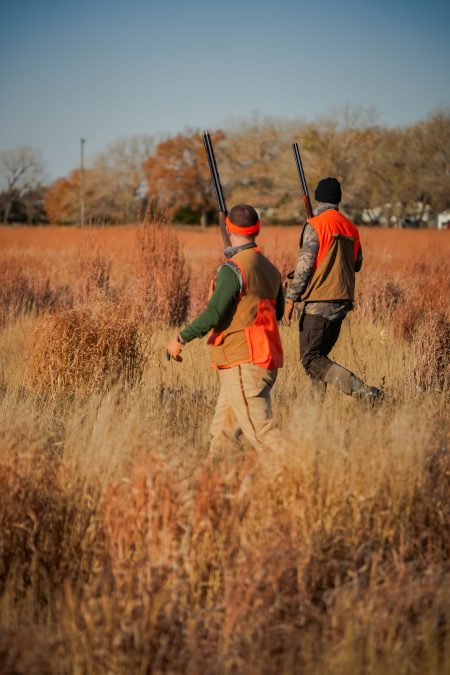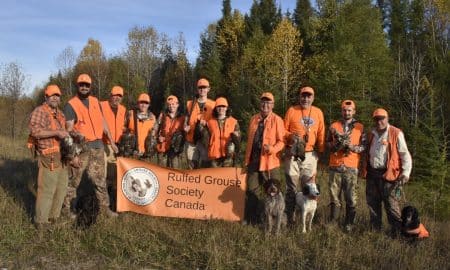The view from the air was breathtaking. The Mackenzie River and its tributaries snaked their way from the rugged mountain tops to create a monster-sized river flowing through a wide, sweeping valley. With a storm front on the horizon the clouds provided a backdrop of moody colours and light streaming through seams in the billowy haze. The flight was emotional and exhilarating as I was starting a longtime dream to hunt the wilderness area of the remote mountains with my outfitter Stan Stevens, of Mackenzie Mountain Outfitters.
Game trails were cut deep into the land and spread like spider webs crisscrossing the alpine from years of use by migrating caribou. When we broke around the corner of a long mountain range, I could see camp on the distant shore of the lake. Stan maneuvered the helicopter down softly, and we were met by an enthusiastic camp crew to unload the gear and get it up to the cabins. After a long day of travel I had finally arrived.
Stan assigned Glenda Groat as my guide, and we went to a large metal grain bin where all the food was stored to pull together food rations and gear for our adventure. I was introduced to our pack dog, Obe, who could carry his weight in supplies and doubled as a bear alarm. Stan has been using pack dogs for several years, and looking at Obi, who was big enough to saddle, I was glad he was coming along.
I decided to hunt with a muzzleloader, not only to challenge my hunting abilities but to try and put a bull in the top end of the Longhunter Record Book. I was shooting a CVA ACCURA V2, 50-calibre rifle with 120-grains of loose Triple Seven powder, and a 300-grain PowerBelt Platinum bullet. I had burned several pounds of powder preparing for the hunt and confirmed the accuracy of my rifle and load with three shots right where I wanted them.
Stan runs most of his mountain caribou hunts from his main camp. There are options to fly to remote valleys, but with caribou continually on the move there is no need to use outpost camps. Not having a full day, we opted to climb the ridge behind camp and spot the surrounding area for caribou. It isn’t uncommon for caribou to venture right through camp, and hunters can enjoy the comforts of the main camp without giving up the trophy potential of remote areas. There are caribou everywhere, and you never know when or where a big one will show up. I do know the best bet is to find a vantage point and be patient. The caribou can travel much faster than any person, and instead of trying to walk to them, let them come to you. I had prepared for months to tackle the mountainous terrain, and it felt good to stretch my legs.

We had been sitting for about three hours when two young bulls surprised us by coming around the corner and popping out just 150 yards from where we were set up. Obi watched the pair with interest but never moved a muscle to give up our location. One of the bulls traveled right past us, close enough to see the whites of his eyes. It was a good lesson on why you need to hike into caribou country, then sit down and quietly watch. The time to work your muscles is when you find a bull you want to go after.
The highlight of the day was lunch. Glenda had cut and seasoned several pieces of sheep backstrap and packed a lightweight fry pan. We had to scrounge to find enough decadent willow branches to make a small fire, but the effort was well worth the reward. The sizzle of the fresh steaks had our mouths watering before we had a chance to flip them. With just enough heat from our meager supply of wood to complete the cooking process, it was one of those moments that define quality in a trip. We hunted the rest of the day, returning to camp with the setting sun.
We rose before the sun the next morning and packed our daily rations before heading down the lake in a small aluminum boat. It was a change of plans from our previous strategy, allowing us to watch a much bigger area. Our goal was to climb a ridge on the east side of the lake, giving us a spectacular view of a long plateau, the guides referred to as the Serengeti. It was aptly named for its abundance of game, and over the years thousands of caribou had migrated and traveled through the corridor.
The rolling terrain covered in bog birch and stunted willow was interspersed with wet areas and sedge bogs. It was a caribou highway between several mountains surrounding the oasis.
We climbed just long enough to break a sweat before finding a vantage point higher than the Serengeti across from us. We settled under a stunted conifer tree, which provided some shade and protection from the elements. It was starting to feel like autumn, and the bank of steam rising from the shore of the lake was a good indication the weather was changing fast.
I no sooner got my binoculars up when I spotted something unusual. At first, I thought there were Dall’s sheep, but they were way too far from the closest mountain for it to make any sense. I watched as they stopped, and on closer examination I deciphered a pair of wolves. The duo was trotting through the brush, coming in and out of sight as they used the terrain for hunting. It was a good sign that we were in the right location. There was no way of getting to the wolves, and they were moving so quickly they were soon a distant memory.
We went back to glassing, and, having the ability to see much farther, we searched the huge plateau to the far reaches. We needed the spotting scope to check things out several miles away, but it paid off as we found bulls.
It isn’t hard to determine large, mature antlers when you see them, and I got excited when we had to look bulls over carefully to decide if they were what we wanted. Beam length, the number of points and double shovels were on the list for candidates worth a second look, or better yet a stalk. We had only been in our new location less than an hour when massive, dark velvet antlers appeared over the brush. Glenda and I were both locked on them intently, looking for the criteria I had set out. The bull was traveling solo, and his outline produced a huge silhouette when he stopped to skyline himself. He definitely had the beam length and points, but without a different profile we couldn’t tell if he had double shovels. The bez was so long it got in the way of distinguishing the shovels, which was a problem I dare not complain about.
When we decided to make a play for the bull we wasted little time knowing how quickly he could disappear. The bull was well over a mile down the shore on the opposite side of the lake, but at the speed he was traveling we’d have to move fast to stay in front of him. We ran off the mountain, and our momentum launched the boat from shore. Glenda fired up the outboard and headed across the lake, looking for a spot to climb out of the basin where we could get a view of the plateau. There was a steep rise coming off the lake that would be a straight-up climb. The boat was headed for shore when Glenda slowed, looked at me, and said she had a feeling we needed to head farther down the lake before climbing. I told her to follow her instinct, and we motored another 800 yards before hitting the shore running.
The climb was a leg burner, and Glenda reached the top ahead of me. She turned and looked downhill to wave me up faster, with a sense of urgency. I marched through the burning pain in my legs and crested the basin in time to see my bull already 70 yards past us. I couldn’t believe the bull covered that much territory in such little time, and the fact he followed the edge of the lake escarpment had put him right in our path.
I was still breathing heavily from the climb, but pulled off my backpack and settled my CVA Accura V2 muzzleloader on the frame to steady for a shot. The bull had noticed the commotion in our area and stopped to look back at us. I knew I only had one shot with the smokepole and didn’t want to rush until I was perfectly steady. I ignored the fact the bull could turn and run at any moment and concentrated on my crosshair. When my scope settled, and there was no movement my rifle belched grey smoke, and I could hear my bullet find its mark. The bull staggered less than ten steps before going down.
Glenda and I yelled with excitement, knowing we were lucky to have traveled farther down the lake than we thought we had to. Glenda’s sixth sense put us right on top of the bull as though we were destined for each other.
The caribou was magnificent and even bigger than I thought. There was no ground shrinkage, and the fact the bull had everything required for scoring high in the record books was in place. We took photos and immediately went to work, caping and boning the bull. With the heat and fresh meat on the ground the biting insects came to life out of nowhere. We had a relatively short pack back to the boat, and it was all downhill. The bull looked even more impressive perched on the front seat of our boat as we headed back towards camp.
Hunting mountain caribou is often referred to as a poor man’s sheep hunt. They share the same country, can be just as challenging to locate and the access, but have never been given the same tenure as the horned game that shares the same mountains. I know they are worthy of a hunt of their own and celebrated our success when returning to camp with seasoned caribou tenderloins seared to perfection in a cast iron fry pan. At that moment there was no way life could get better.
The bull scored 374 5/8, putting him high in the Longhunter standings.
By Brad Fenson
Per our affiliate disclosure, we may earn revenue from the products available on this page. To learn more about how we test gear, click here.

